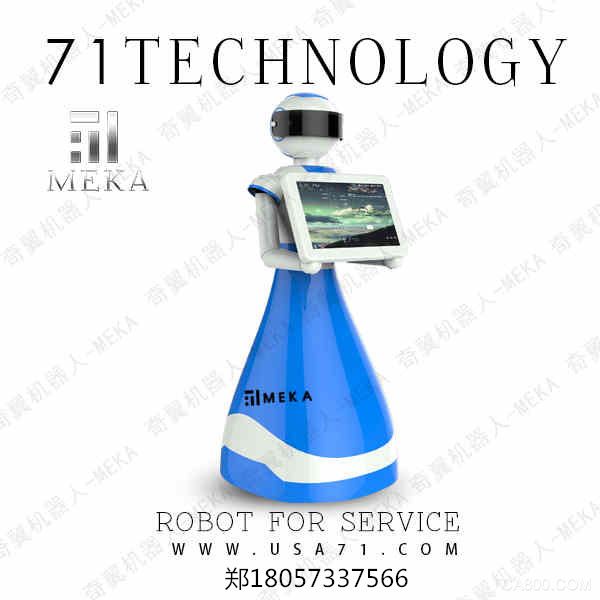Explain the basic functions of the robot body sensing function:
According to the needs of the corresponding behavior can be set, when the pat to explain the robot head, explain the robot can adjust the head, continue to move forward, say a sentence and so on. Touching the hand, the body will have a different kind of surprise.
Sports function:
Intelligently explain that the robot can walk on its own according to the set track. If it encounters obstacles (guests), it will stop progressing, and the voice prompts to let the front-line personnel give way. If the current party disappears and continues to walk, the staff will meet the inevitable obstacles. After receiving the signal, it can be actively controlled by the local control, ipad or remote control.
Voice function:
The digital museum explains that the robot has a voice output function, which can be introduced to explain, automatically sing, tips to give way, human-computer interaction. Allows users to record dialects based on local characteristics and become more popular.
Human-computer interaction: Simple communication of museum robots through microphones, such as broadcast weather forecast, voice switch lights, windows, emotional communication, etc. Museum robots' facial expressions can also show different expression changes based on interactions with users.
control function:
You can use pre-set instructions to let robots perform a complex task actively. You can also use the ipad and controller to actively control robots to complete tasks.
Charging life:
The theory can be used continuously for 72 hours and pro-test can be used for 3 days. Explain that the robot has a power detection function. When the power is lower than the set value, it can automatically charge to the charging station, and it can also provide voice prompts. The staff can plug in the power and charge it.

Function explanation, reception flat size 15 inch capacitive screen / free module voice dialogue automatic wake-up face recognition control mode patrol line / remote control / program setting navigation mode track / free walking voice broadcast live voice dubbing smart butler control module touch sensing three Number of songs Unlimited Obstacle Avoidance Radar climbing angle less than 15 degrees Language support English and Chinese sound source speakers 10 inch high fidelity product material ABS+ double piano paint exterior color can be customized running speed 0.3m/s customizable weight 50KG
Specifications 0.65(L)*0.65(W)*1.55(H)
Voltage and current 36V 20A
Standby duration 15 days Life time 72H
Charging method manual charging / automatic charging Design life> 10 years After-sales warranty 1 year lifelong maintenance Applicable areas Shopping mall guide, exhibition hall, hotel welcome, exhibition activities;
Can replace the receptionist, explainer, host interaction and so on.
Small computer system interface (SCSI) is an independent processor standard for system level interfaces between computers and intelligent devices (hard disks, floppy drives, optical drives, printers, scanners, etc.). SCSI is an intelligent universal interface standard.
The maximum synchronous transmission rate of the original SCSI standard was 5MB / S (scsi-1, also known as narrowscsi, in 1986, the maximum support for seven devices, the clock frequency was 5MHz), and the later SCSI II specified two options for increasing the speed. One is to increase the frequency of data transmission, namely fast SCSI (in 1994, the maximum support for 7 devices) is 10 Mb / S (10 MHz) because the frequency is doubled; the other is to double the transmission frequency and increase the width of the data path from 8 bits to 16 bits. The maximum synchronous transmission speed of widescsi is 20MB / S (the clock frequency is 10MHz, in 1996, the maximum support for 15 devices).
The third generation of SCSI appeared around 1995, but there was no unified standard
1. Ultra SCSI with maximum synchronous transmission speed of 20MB / S (also known as FAST-20 SCSI, clock frequency of 20MHz);
2. Ultra wide SCSI with maximum synchronous transmission speed of 40MB / S (same as 1);
3. Ultra2 SCSI with maximum synchronous transmission speed of 40MB / S (also known as fast-40 SCSI, clock frequency of 40MHz, 1997).
Later, some newer SCSI standards appeared
1. Ultra2 widescsi with maxmum synchronous transmission speed of 80mb / S (clock frequency of 40MHz);
2. Ultra 3 SCSI with maximum synchronous transmission speed of 160MB / S (also known as ultra-160 or fast-80 wide SCSI, clock frequency of 40MHz plus double data rate, 1999);
3. Ultra 320 SCSI with maximum synchronous transmission speed of 320mb / S (also known as ultra 4 SCSI, clock frequency of 80MHz plus double data rate, 2002); 4. Ultra 640 SCSI with maximum synchronous transmission speed of 640MB / S (clock frequency of 160MHz plus double data rate, 2003, is the latest SCSI standard)
This interface is a convenient interface standard for system integration, cost reduction and efficiency improvement. More and more devices will use the SCSI interface standard. Therefore, there are many hard disks and SCSI CD-ROM drives with SCSI interface. However, due to the cost problem, they are mainly used on medium and high-end servers and workstations.
Metal Male SCSI Cover Section
ShenZhen Antenk Electronics Co,Ltd , https://www.pcbsocket.com